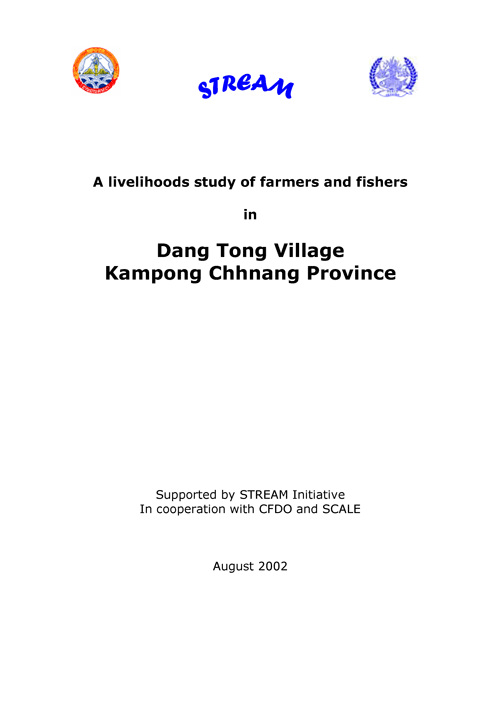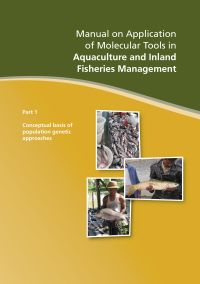A livelihoods study of farmers and fishers in Dang Tong Village, Kampong Chhnang Province, Cambodia
1 August 2002 | 984 Downloads | .pdf | 1.06 MB | Cambodia, Gender, Livelihoods, gender and social issues
This is the report of a livelihoods study team working together with villagers from Dang Tong Village in Kampong Chhnang Province, Cambodia. The study of the livelihoods of farmers and fishers is based on information provided by the villagers of Dang Tong, who shared their knowledge and raised real problems related to their livelihoods.
The study was undertaken from 5-10 August 2002. The team worked with 10-30 villagers who volunteered to participate in the discussions. The participants represent 85 families in Dang Tong Village.
Having considered differences in material ownership, means of production and standards of living, the villagers decided to divide themselves into three wealth ranking groups: medium, poor and very poor. The main resources in the village were divided into five groups: human, natural, financial, infrastructure and social.
In general, villagers are skilled in farming and mat weaving, but some villagers also have individual skills such as carpentry, boat making, hairdressing and fixing machines. Although this village is in the Tonle Sap (Great Lake) area, which has the most plentiful supply of fresh fish in the country, the villagers are subsistence fishers.
The village always floods in the monsoon season so the road can be traversed only in the dry season. Over the years the river has eroded the road, and the bridge is old and decrepit. Although the village has large areas for planting, the natural resources of the village are being degraded, especially the fishing. The inundated forest is disappearing due to overuse of its wood for fuel and the expansion of dry season rice and lotus areas.
The villagers rely mainly on agricultural produce and on exploiting natural resources. As the population grows, they expand the planting area to improve production, in particular clearing the inundated forest to plant dry rice. Fish is especially important but the disappearance of the forest has led to a decrease in natural fish stocks. Villagers have no clean water or hygienic toilets, which increases the risk of disease. Additionally, villagers do not know how to use pesticides safely or effectively. The community fishery is newly established and inexperienced.
There were three main groups of people and institutions that had relationships with villagers: government, business and civil society.
The main problems identified by the villagers relate to a lack of irrigation systems, the problem of illegal fishing, and lack of technical know-how regarding the use of pesticides. Villagers are also worried about the degradation of riverbanks and fish spawning areas. The identification of the most important problems resulted in an action plan designed to repair the dams and channels and to secure and improve rice production.
It was recommended that the irrigation system should be fixed, that villagers should receive advice on using pesticides, managing the community fisheries and managing the natural resources. Additionally, clean water for drinking and toilet facilities should be established.
This publication is also available in Khmer.
Creative Commons Attribution.

